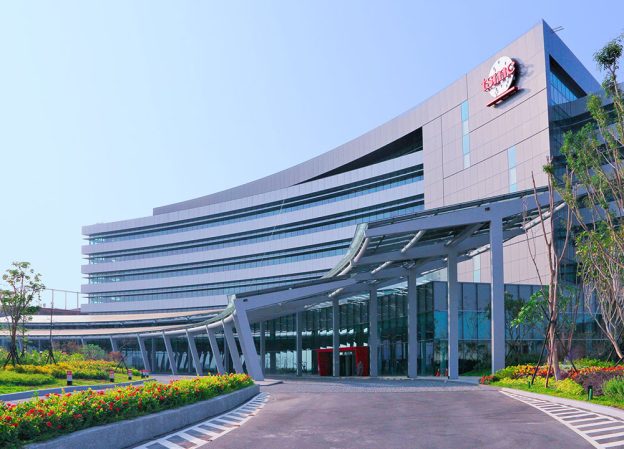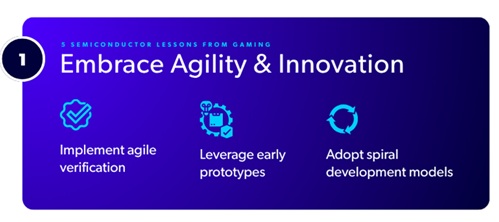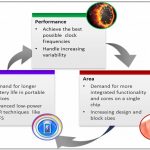On the heels of severe Distributed Denial of Service (DDoS) attacks, new Internet-of-Things (IoT) powered botnets are emerging. There are already hundreds of such botnets which exist in the underground hacking ecosystem, where services, code, and specific attacks can be purchased or acquired. New botnets are being developed… Read More
 Think Quantum Computing is Hype? Mastercard Begs to DisagreeJust got an opportunity to write a blog…Read More
Think Quantum Computing is Hype? Mastercard Begs to DisagreeJust got an opportunity to write a blog…Read More TSMC Kumamoto: Pioneering Japan's Semiconductor RevivalIn the lush landscapes of Kumamoto Prefecture, on…Read More
TSMC Kumamoto: Pioneering Japan's Semiconductor RevivalIn the lush landscapes of Kumamoto Prefecture, on…Read More Memory Matters: The State of Embedded NVM (eNVM) 2025Make a difference and take this short survey.…Read More
Memory Matters: The State of Embedded NVM (eNVM) 2025Make a difference and take this short survey.…Read More 5 Lessons the Semiconductor Industry Can Learn from GamingBy Kamal Khan The semiconductor world has always…Read More
5 Lessons the Semiconductor Industry Can Learn from GamingBy Kamal Khan The semiconductor world has always…Read MoreLet’s Talk About Cyber Risks
In the last 12 months, we have seen an unprecedented number of cyber-attacks occur or come to light. Sophisticated attacks against governments, businesses, consumers, and the pillars of the Internet itself. The future appears to be fraught with run-away risks. Can security tame data breaches, ransomware, massive DDoS assaults,… Read More
Automotive Semiconductor Safety
One of the more telling trends in the semiconductor industry is the “fabless systems companies” transformation. Systems companies that used to buy chips are now making their own to better control the system they are designing: from the chip, package, PCB, the complete system. Apple is the best example as they are now one of the most… Read More
Is FPGA Intel Next Big Thing for IoT ?
I write this article in reaction to another article from Seeking Alpha titled “Intel Next Big Thing”. I have extracted this from the article:
The IoT space is growing rapidly with the advent of connected cars, smart homes and a variety of connected devices and appliances. However, before a full-blown ecosystem around these devices… Read More
EUV transition comes into focus
We attended ASML’s analyst day in New York on Halloween. We were very impressed with the quality, content and clarity of the presentations and thought it was one of the best strategic positioning presentations we have seen in the semi industry. We also had an opportunity to meet with several members of senior management after… Read More
RRAM Redux
Advanced memory technologies are a perennially hot topic thanks to a proliferation of data-hungry applications pushing our demand for more capacity and performance at less power and area. Among several technology contenders is Resistive RAM or RRAM (also called ReRAM). In this technology a conducting filament is grown through… Read More
How to nail your PPA tradeoffs
How do you ensure your design has been optimized for power, performance, and area? I posed this question to Mentor’s Group Director of Marketing, Sudhakar Jilla and product specialist Mark Le. They said that finding the PPA sweet spot is still often done by trial and error – basically serial experiments with various input parameters… Read More
A Peek Inside the Global Foundries Photonic Death Star!
Last week I wrote about the Photonics Summit and hands-on training hosted by Cadence Design, PhoeniX Software and Lumerical Solutions and in that article I mentioned that Ted Letavic of Global Foundries laid out a powerful argument for why integrated photonics is a technology that is going main stream. This article dives into … Read More
Always-On IoT – FDSOI’s Always Better? What About Wafers? (Questions from Shanghai)
Mahesh Tirupattur, EVP at low-power SERDES pioneer Analog Bits lead off the panel discussion at the recent FD-SOI Forum in Shanghai with the assertion that for anything “always on” in IoT, FD-SOI’s always better. They had a great experience porting their SERDES IP to 28nm FD-SOI (which they detailed last spring – see the ppt here… Read More
Protium for the win in software development
Cadence Design Systems is a long-standing provider in hardware emulation, but a relative newcomer to FPGA-based prototyping. In an upcoming lunch and learn session on November 11 in San Jose, Cadence teams will be outlining their productivity strategy. What’s different with their approach and why is this worth a lunch?… Read More






AI RTL Generation versus AI RTL Verification